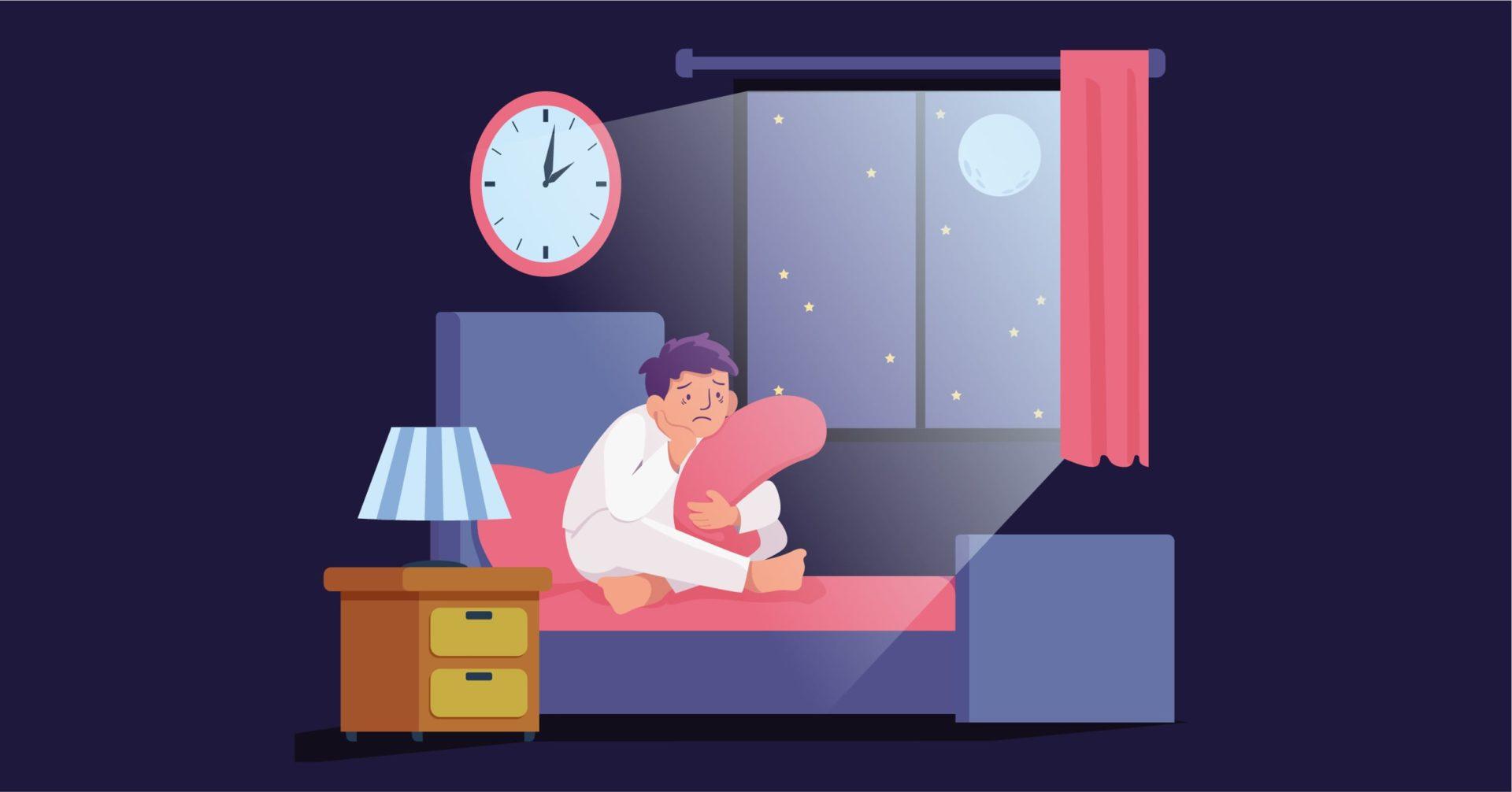Overview
Delirium is a common phenomenon that brings about a confused state marked by impaired concentration abilities and cognitive dysfunction. Occurring frequently in situations of hospice and supportive care, it tends to have underlying causes based within terminal illnesses, post-operative complications, and brain trauma.
Delirium is also associated commonly with substance use. The DSM-5 classifies Delirium into substance withdrawal Delirium, medication-induced Delirium, Delirium due to another medical condition, and Delirium due to multiple etiologies.
While Delirium can occur in any individual, children and the elderly are at increased risk owing to stages of brain development. Treatment involves pharmacotherapy as well as environmental manipulation. Family support can be helpful in the management of Delirium.
Signs and Symptoms
The symptoms of Delirium include:
- Impaired attention, marked by a difficulty in mobilizing, shifting and sustaining attention
- Short term and long term memory deficits
- Disturbed orientation, comprehension, and/or visuospatial ability
- Time and space disorientation
- Speech and language disturbances
- Dysgraphia, such as spelling errors or other writing impairment
- Disturbances in sleeping patterns
- Emotional disturbances marked by anxiety, depression, irritability, anger, euphoria, and apathy
- Hyperactive, hypoactive, or mixed levels of motoric disturbance
- Hallucinations and delusions (in some cases)
Risk Factors
Delirium can occur in any person at any age, though an increased risk exists in the elderly, the cause of which is often attributed to frailty and the manifestation of geriatric syndromes. Children are also at a higher risk. Delirium is more likely to affect men at an earlier age than women in elderly populations.
The incidence of Delirium is often reported in post-operative settings, with the disorder arising as a complication in as high as 56% of cases, predominantly affecting the elderly. The occurrence of post-operative Delirium is associated with poorer prognosis, cognitive decline, longer hospital stays, increased health problems and increased mortality. Toxicity from medication can also influence the course of Delirium.
The causative factors for Delirium are extensive. During any age, multiple medications, substance use and intoxication, and having multiple medical issues,inclusive of non-communicable diseases, infection and head injury, can be attributed to the onset of Delirium.
These factors often interfere with brain functioning, such as in the case of medication or drug use where chemicals in the brain are affected, which can bring about the disorder.
Diagnosis
The standard criteria for diagnosis of Delirium determine its clinical assessment. Various diagnostic tools, such as self-report and practitioner-administered tests based on continuous surveillance, have also been proposed in order to expedite the diagnostic process and compensate for the shortcomings of clinical evaluation when objective criteria are unsupportive.
The DSM-5 mentions the following diagnostic criteria for Delirium:
- A disturbance in attention (i.e., reduced ability to direct, focus, sustain, and shift attention) and awareness (reduced orientation to the environment).
- The disturbance develops over a short period of time (usually hours to a few days), represents a change from baseline attention and awareness, and tends to fluctuate in severity during the course of a day.
- An additional disturbance in cognition (e.g., memory deficit, disorientation, language, visuospatial ability, or perception).
- The disturbances in Criteria A and C are not better explained by another pre-existing, established, or evolving neurocognitive disorder and do not occur in the context of a severely reduced level of arousal, such as a coma.
- There is evidence from the history, physical examination, or laboratory findings that the disturbance is a direct physiological consequence of another medical condition, substance intoxication or withdrawal (i.e., due to a drug of abuse or to a medication), or exposure to a toxin, or is due to multiple etiologies.
The DSM-5 emphasizes specification on the basis of psychomotor activity. Hyperactive Delirium brings about mood lability, agitation and refusal to cooperate with healthcare professionals. Hypoactive Delirium is characterized by sluggishness and lethargic behavior. Mixed level of activity often refers to rapidly fluctuating activity levels.
Treatment
The primary step in managing Delirium is to uncover and reverse the underlying cause for symptoms. Most cases of Delirium are manageable and reversible, unless its origin lies in a terminal illness or severe brain trauma. Appropriate and individualized use of anaesthetics, nursing surveillance, and effective communication of the staff among themselves as well as with the patient can contribute to reducing the occurrence and clinical effect of post-operative Delirium.
Pharmacotherapy involves the use of antipsychotics. When Delirium is a result of alcohol or drug withdrawal, anxiolytics (benzodiazepines) are used for treatment.
Environmental manipulation includes using cues to help patients stay oriented, such as visible calendar placements, night lights, photos of familiar people, clocks, clear signage, and the like. It is also helpful for the staff members to introduce and re-introduce themselves while working with patients, in addition to providing reorienting prompts.
Differential Diagnosis
1. Psychotic disorders and bipolar and depressive disorders with psychotic features: Delirium , does include hallucinations, delusions, language disturbances, and agitation, but it must be distinguished from brief psychotic disorder, schizophrenia, schizophreniform disorder, and other psychotic disorders, as well as from bipolar and depressive disorders with psychotic features.
2. Acute stress disorder: Delirium and acute stress disorder have similar symptoms of fear, anxiety, and dissociative symptoms, but acute stress disorder is precipitated by exposure to a severely traumatic event.
3. Malingering and factitious disorder: Delirium can be distinguished from these disorders on the basis of the often atypical presentation in malingering and factitious disorder and the absence of another medical condition or substance that is etiologically related to the apparent cognitive disturbance.
4. Other neurocognitive disorders: In older adults, symptoms of delirium and dementia are commonly present. The traditional distinction between delirium and dementia based on the onset and temporal course is particularly difficult in those elderly individuals who had a prior neurocognitive disorder that may not have been recognized, or who develop persistent cognitive impairment following an episode of delirium.
Specialist
Professionals involved in the diagnosis and management of Delirium depend on its cause. Specialists based in neurology, neurosurgery, or medicine may be consulted. In cases of postoperative Delirium, it is helpful to have experienced clinical consultants or nurses who can advise the staff on how to handle the patient.
In Conclusion
Addressing the risk variables that might cause an episode is the most effective strategy for preventing delirium. The study suggests that several methods, such as encouraging restful sleep patterns, supporting the person’s ability to stay composed and well-organized, and assisting in avoiding health issues or other complications, can help prevent or lessen the severity of delirium.
It is important to understand the cause of Delirium. Knowing the cause will help in further preventing the development of the symptoms. Therapy will help understand the cause of Delirium. Get in touch with an expert for personalized therapy and reduce the symptoms of Delirium. Early therapy helps in gaining control over the mind and maintaining a healthy social life.
Book your therapy session with our experts today.





